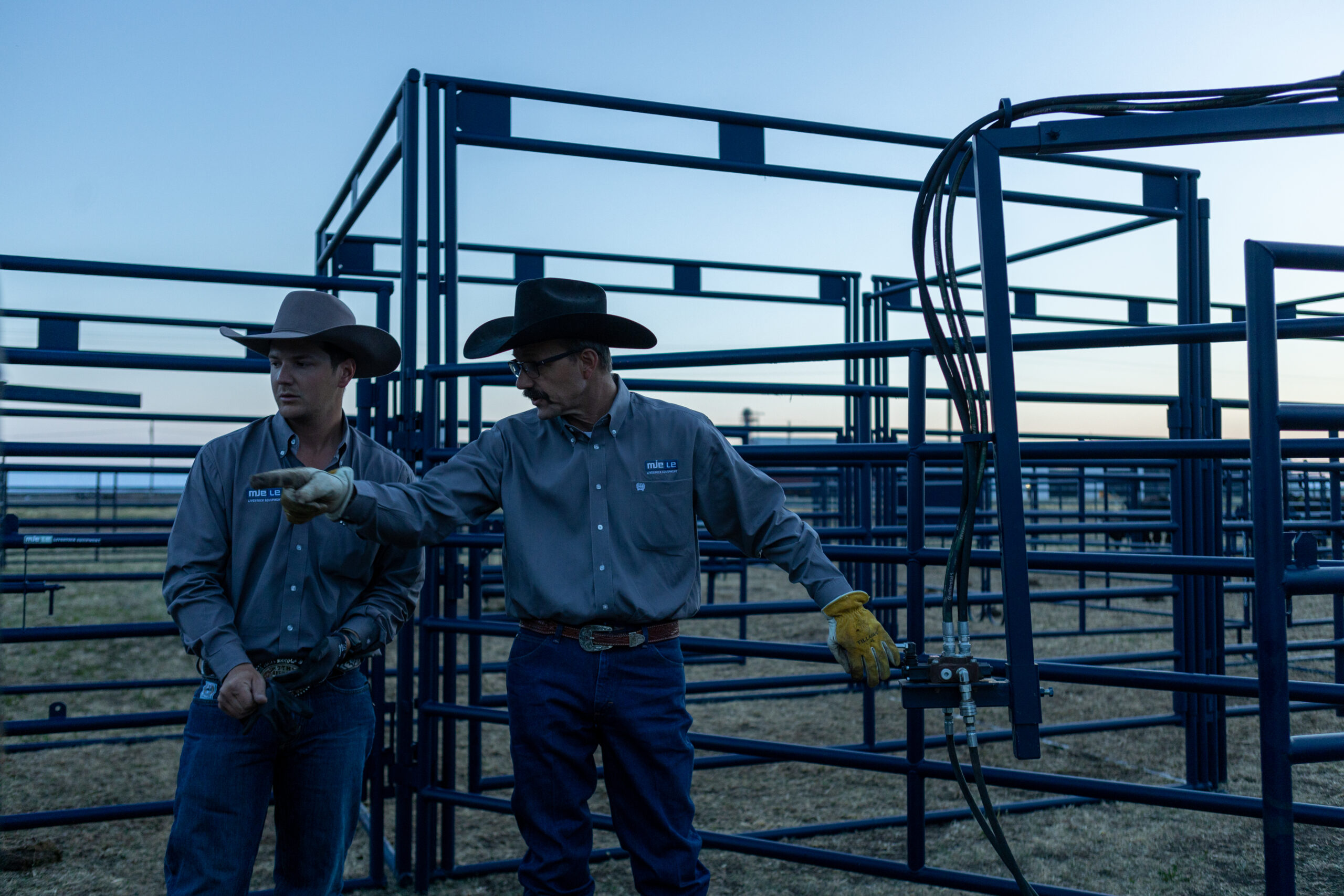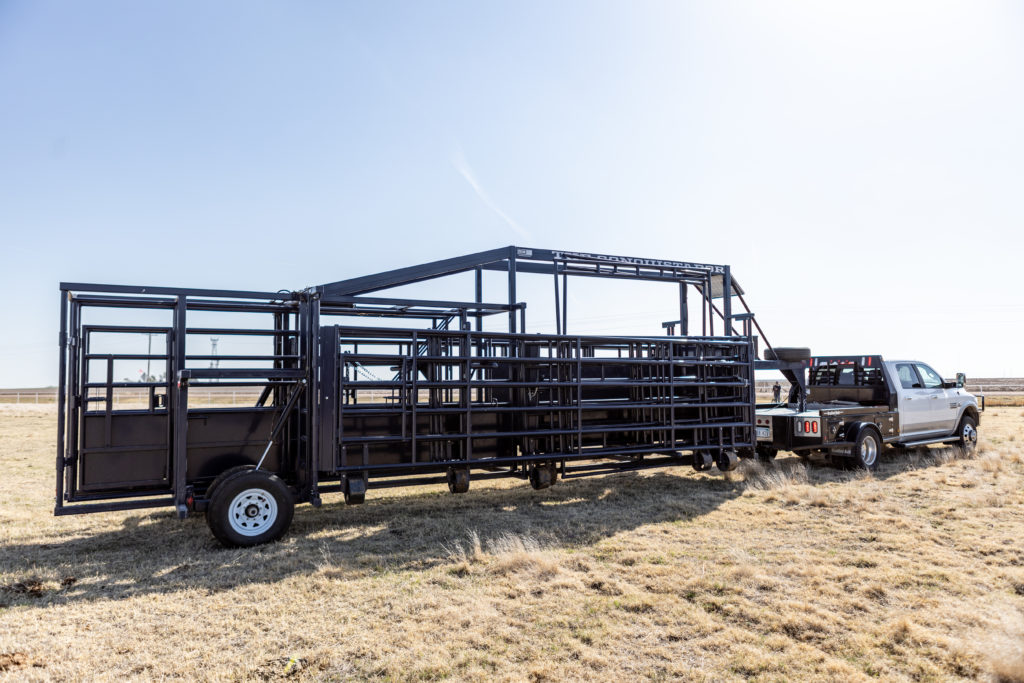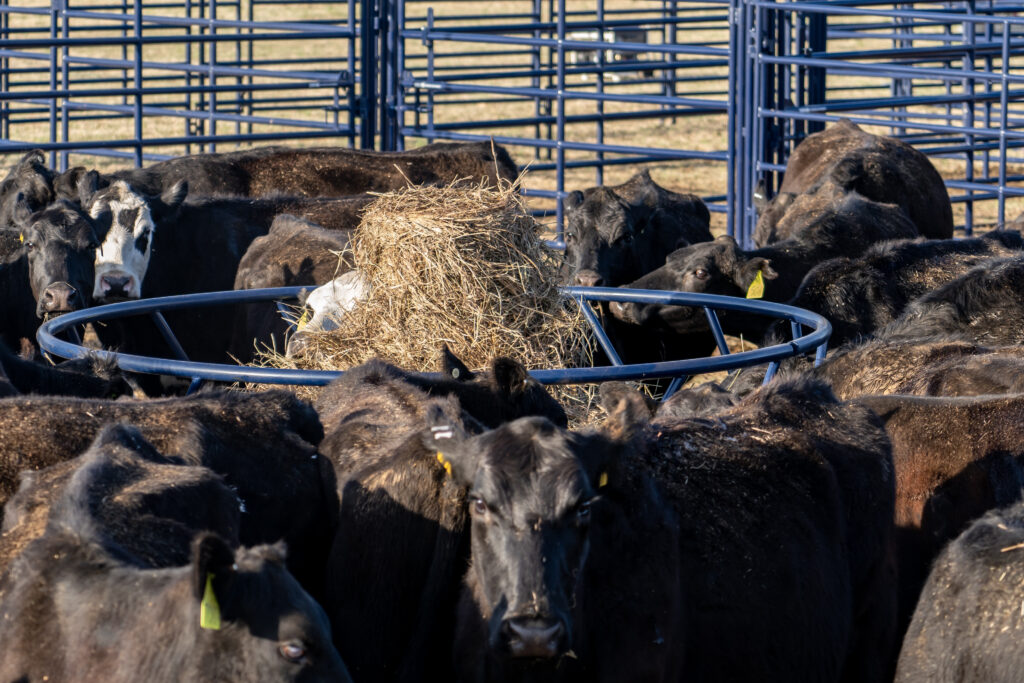
2.1.23
Tips For Getting Winter Ready on the Ranch
WITH DR. TERA BARNHARDT, DVM, MS
As the wind whips through the air and hits my neck, it always sends a chill down my back that I can feel in my toes. I often think about how lucky we are to be involved in production agriculture. Some days, especially in the winter, an office gig doesn’t sound so bad.
Brrrrrr. It sure has been cold outside.
While the wind often chills us, cattle are amazing creatures that acclimate to cold weather and do well during the winter. With a bit of preparation on the ranch, winter can go smoothly.
Here are a few focus areas that help prepare the ranch for winter.
Feed and Conservation Tips
It’s no surprise that feed is your most valuable asset. It takes up the most room on the books, operating note, and in your mind when you’re preparing to overwinter the cow herd. In preparation for winter, you had to run the numbers to make sure you could acquire enough feed to make it through a season that sometimes sends weather we can’t predict. Feed acquisition has presumably been a major stressor for most operations in recent drought conditions.
Make sure you are doing everything possible to conserve the feed you provide for your cows. Feeding hay and silage in bunks or hay feeders will help preserve your most precious commodity.
Tips for Sheltering From the Storm
Shelter from winter storms will help cattle conserve energy and even survive in some dire cases. I’m becoming a bigger fan of portable shelters for livestock as many of my clients have had to get creative due to moving livestock more often to match up the forages or grazing opportunities they have available.
Your employees (see also: family members), your veterinarian, and your cows will thank you if there’s a place to get in and out of the wind if cattle need to be assessed in the winter. When designing any shelter for livestock, if you are planning on calving out cows, think about the ease of handling cattle through the shelter. The last thing you want to do is create an opportunity for frustration with cattle handling when you need to get cows in during the winter.
Tips for Preparing for Spring
Cattle handling is one of my favorite parts of my job. It is fun to study cattle and see how many of the different types of cattle respond to different facilities and people. Looking toward spring cattle work, ensure your working facilities are in tip-top shape. Winter provides a great time to plan for spring working events and improve your operation.
Some of my favorite working facilities are portable and occur right where the cattle are grazing. Working facilities in pastures allow quieter cattle handling events and less transportation. Any time we can reduce transport with cattle, we reduce opportunities for injury or stress on the cattle and make our operations even more environmentally friendly.
Portable working facilities also offer producers the opportunity to maximize labor resources. We all know it’s hard to find and retain good help. Reducing the time needed for various spring working events can help you save money in the long run from a labor standpoint.
Extreme Weather Planning Tips
In my short tenure as a cattle veterinarian, I have seen a myriad of extreme weather events. Some of these occur during the winter, and cattle can acclimate to many situations – They are very resilient, much like their ranchers! However, there are a few very helpful tips when we experience extreme weather:
- PLAN & PREVENT – Work closely with a veterinarian to ensure your herd is vaccinated. Prevention of disease is by and far your cheapest weapon. Inviting your veterinarian out often to observe any changes in your operation can be crucial to your operation’s success. I don’t say this because of bias – we make a lot more money during emergencies and outbreaks. That’s not why we got into this business, and we don’t enjoy working that way. We like to plan and prevent rather than problem-solve!
- HAVE AN ID BACKUP PLAN – Check identification on all of your cattle. Are you following state regulations? Do you have a backup plan for identification? Do you have a photo inventory of your herd? There are a lot of things that can cause our normal to be completely shaken. Have a plan for when your routine identification cannot be carried out.
- WATER PLANS – Water is essential for survival. Plan for the most precious resource you have! Identify backup sources, transportation, and holding of water. When you move cattle, plan for water. When the weather gets bad, plan for water. Plan for water when you have a calving nightmare, and it’s not near the farmhouse. Can you tell what stresses me out the most when things go awry? Water!
Planning goes a long way in keeping a happy, healthy herd of cattle when winter comes knocking. Utilizing these tips will reduce stress and save time & energy for both you and your labor.
MEET DR. TERA BARNHARDT
Dr. Tera Barnhardt is a consulting veterinarian with a master’s in Science (from Kansas State University – GO CATS!) who specializes in animal welfare and research for feedyards, dairies, and cow-calf operations.
A busy mother of three and small business owner, Dr. B. is passionate about educating others in the beef and livestock industry about animal health and taking an active role in her community.
Follow Dr. B on LinkedIn, Twitter, or Instagram to keep up with the latest news & information about #beef and so much more!

